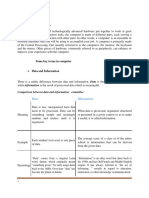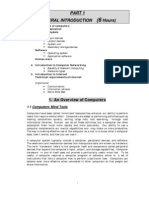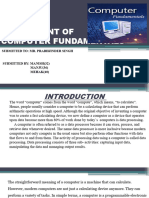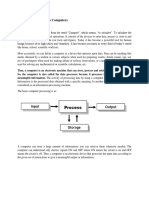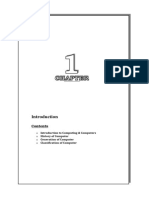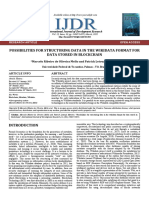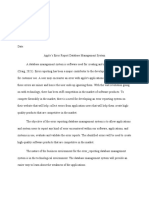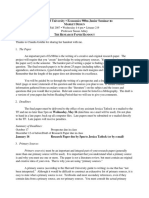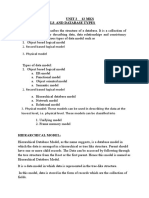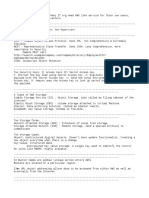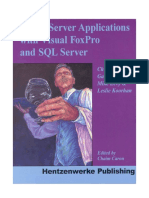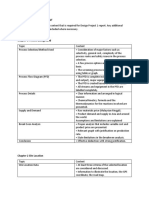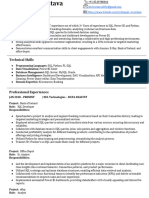0% found this document useful (0 votes)
66 views4 pagesFundamentals of Computer
The document provides an introduction to computers, including:
1. Computers accept data as input, process it according to instructions stored in memory, produce output, and store information for future use.
2. The five basic functions of a computer are taking input, storing data and instructions, processing data, generating output, and controlling these steps.
3. Data becomes information when contextualized and organized, and information becomes knowledge when applied and used to answer "how" questions.
Uploaded by
Iduni HiranyaCopyright
© © All Rights Reserved
We take content rights seriously. If you suspect this is your content, claim it here.
Available Formats
Download as DOCX, PDF, TXT or read online on Scribd
0% found this document useful (0 votes)
66 views4 pagesFundamentals of Computer
The document provides an introduction to computers, including:
1. Computers accept data as input, process it according to instructions stored in memory, produce output, and store information for future use.
2. The five basic functions of a computer are taking input, storing data and instructions, processing data, generating output, and controlling these steps.
3. Data becomes information when contextualized and organized, and information becomes knowledge when applied and used to answer "how" questions.
Uploaded by
Iduni HiranyaCopyright
© © All Rights Reserved
We take content rights seriously. If you suspect this is your content, claim it here.
Available Formats
Download as DOCX, PDF, TXT or read online on Scribd
/ 4








